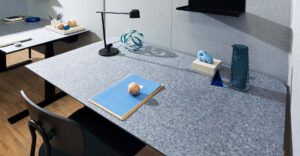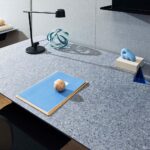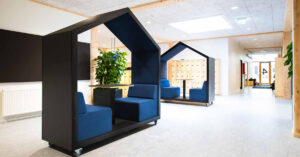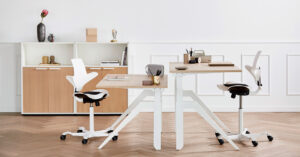February marks the beginning of a new three-year trial period at more than 46 primary and lower secondary schools throughout Denmark. The subject Teknologiforståelse (Introduction to Technology) seeks to introduce pupils up to age 15 to everything from algorithms to data security. Here are some insights into the best furniture and floor plans for this new subject.
‘The purpose of this new subject is to give pupils an introduction to technology and concrete skills in navigating and being active consumers in the digital universe. At the same time, it will help shape the IT specialists of the future.’
This is according to Lasse Remmer, IT teaching consultant at Future Classroom Lab and one of the experts behind the development of the new school subject. The first phase is a three-year trial at 46 primary and lower secondary schools in 32 municipalities throughout Denmark.
The trial period will shed light on how technological comprehension can be introduced as a compulsory element in teaching – either as an independent subject or as part of the existing curriculum.
Snapchat from different angles
More specifically, Introduction to Technology seeks to give pupils competencies in four areas:
- Digital empowerment
- Digital design and design processes
- Computational thinking
- Technological capabilities
‘There should be an interplay between the four competency areas, which will be explored through longer projects that shed light on the subject from different angles. Instead of banning mobiles at school because pupils spend too much time on Snapchat, the new subject might have the pupils explore the challenges of the medium,’
says Lasse Remmer, who continues:
‘Perhaps the pupils would learn more about Snapchat as a medium and a business, how they protect their data, and why the medium can be disrupting in the classroom – and they might learn to code a little program that can be used to shut the medium off so the mobile can still be used for other purposes in the classroom.’
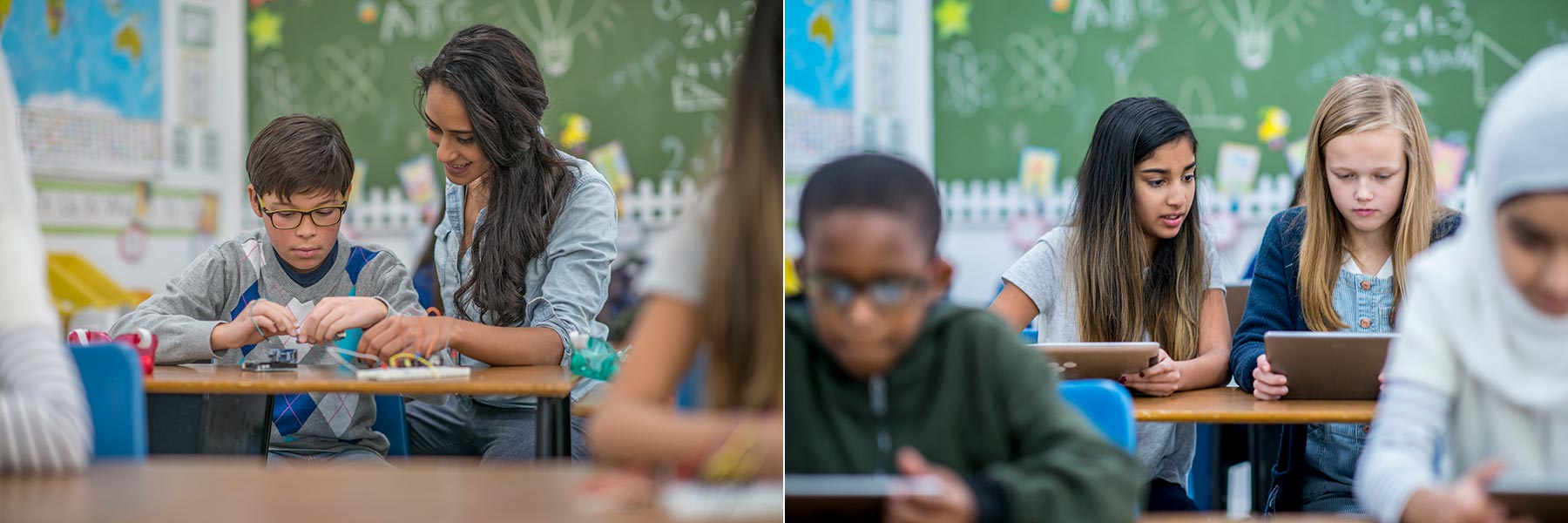
New working methods
In addition to concrete technological skills, Lasse Remmer says the subject will introduce a new working method in the classroom.
‘In order to cover all the issues related to technology – both theoretical and practical – the pupils will be required to work in groups more iteratively and in small loops based on a design-thinking methodology. This means that pupils will work at a faster pace to achieve a result, test it, receive feedback and go back to make adjustments to the product and then test it again.’
Comes with new requirements
This new approach to teaching comes with a new set of requirements for optimum school furnishing and floor plans, and in this regard, Lasse Remmer calls attention to these three trends:
- Greater awareness of the strengths of the school’s different and existing facilities – and how they can best be utilised. For instance, how can the art room be used in a mathematical context? What is best taught in a traditional classroom at the board, and when is it time to use the workshop? Lasse Remmer recommends posting visual guides to help the pupils along.
- Furthermore, there is a need to establish more multifunctional rooms and different learning environments which the pupils can use as needed. The traditional classroom works well for theoretical teaching, but when it comes time to converting theory into practice, other learning environments work better: such as shop facilities, a little furnished corner, creative areas, perhaps a large common area or places outside the school where pupils can find inspiration for new ideas.
- In extension to this, there will be a need for multifunctional furniture that can facilitate a range of processes. For instance, for presentations, it would be relevant to have different rooms and seating, surfaces you can place things on and screens for visual presentations.

